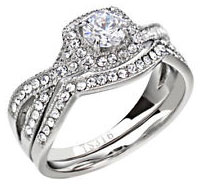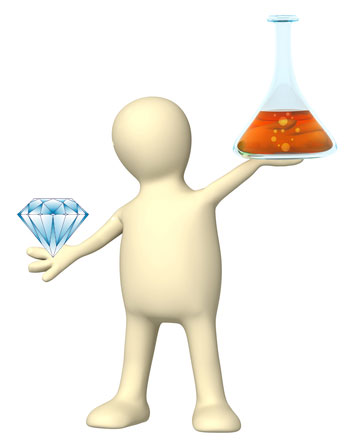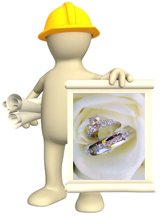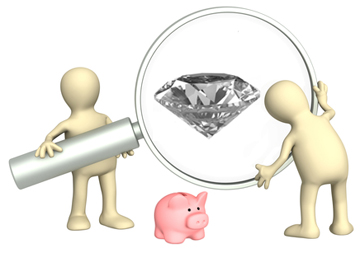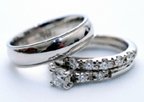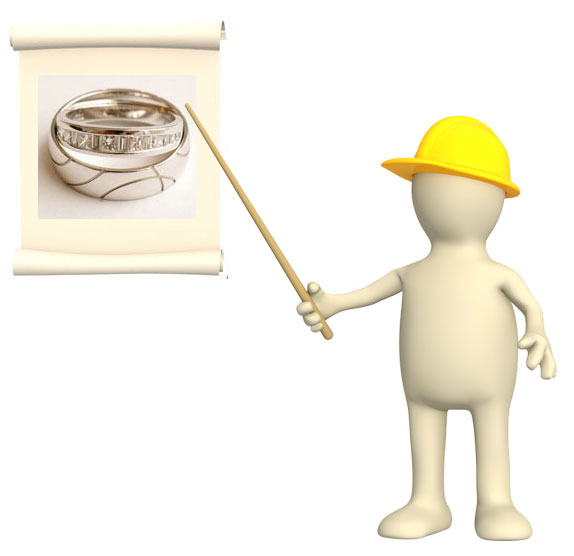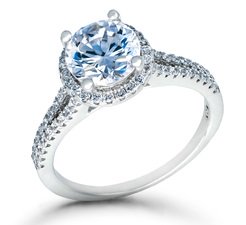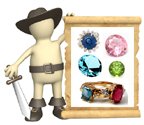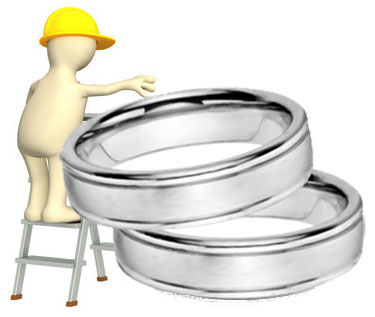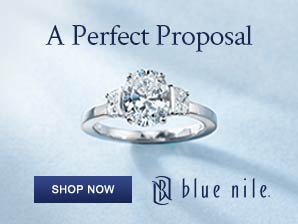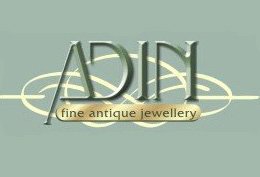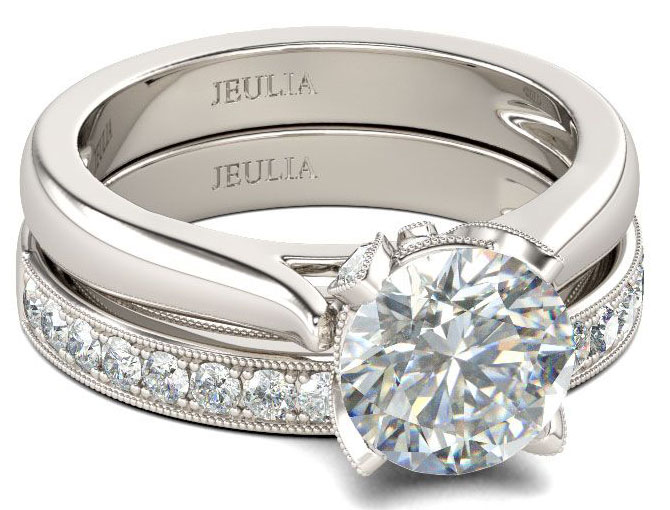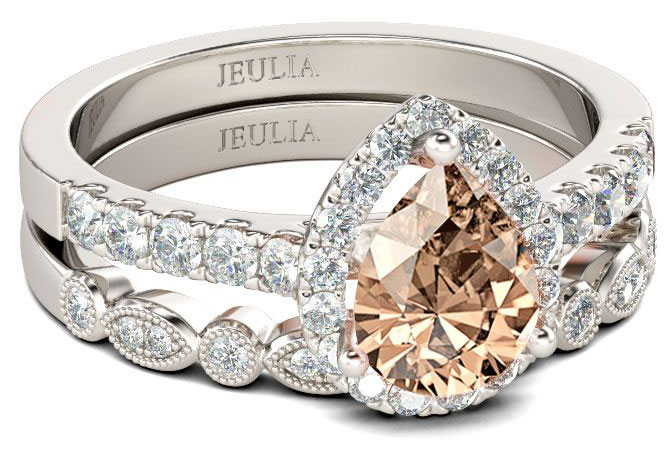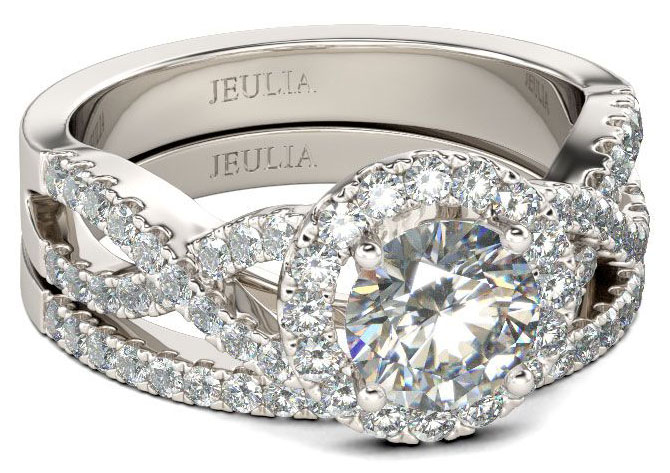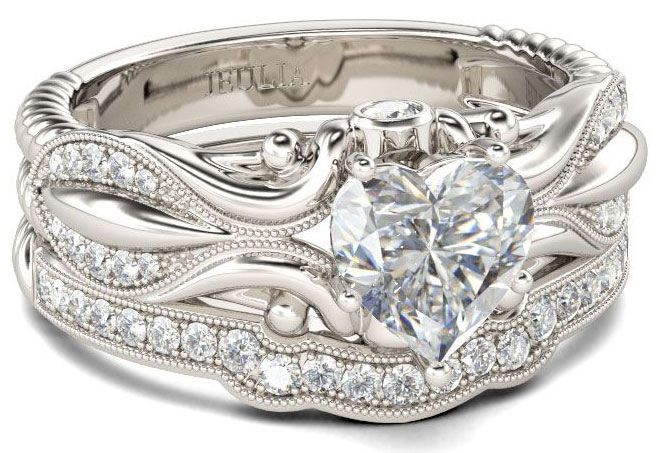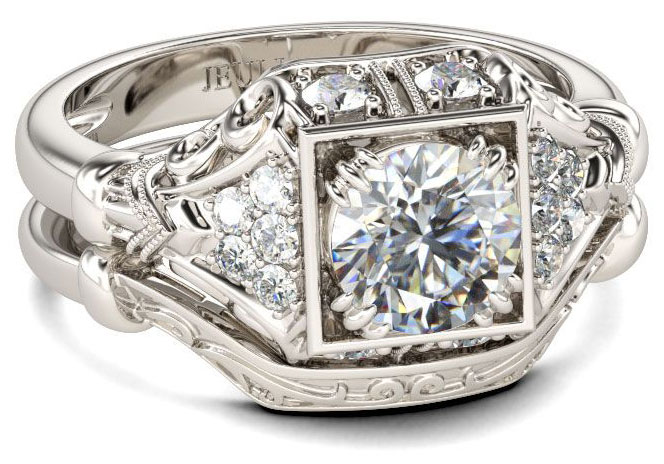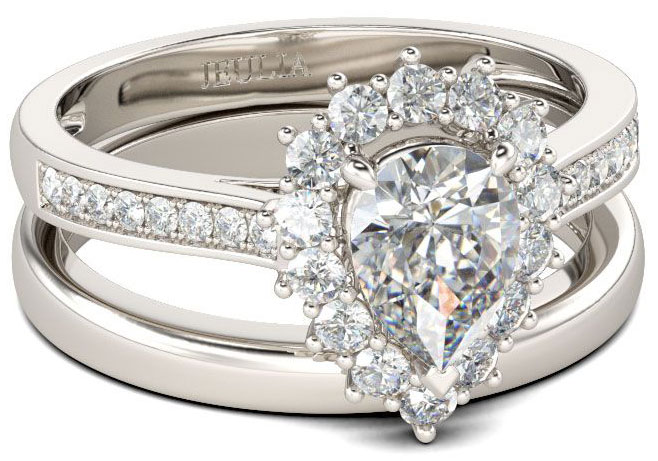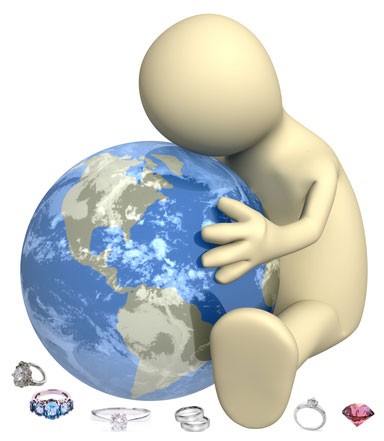Cubic Zirconia vs Diamond
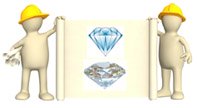
The differences between cubic zirconia vs diamond just by looking at the stones can be subtle or distinct depending on the quality of the gemstones, while the chemical make-up and physical properties between these two stones are quite different.
To find out how cubic zirconia compares to a diamond, and if this is the right diamond simulant for you, check out the helpful info below.
Cubic Zirconia Fast Fun Facts!
Although a hard stone, CZ can be scratched by diamonds and strong gemstones like sapphires and rubies.
CZ that forms in nature is known as baddeleyite.
Baddeleyite is a very rare mineral - all jewelry CZ is synthesized in a laboratory.
Or, take a look at What is Cubic Zirconia? to see the history of cz and how it is synthesized or Cubic Zirconia Wedding Sets if you are looking for inexpensive wedding rings. And if you have any questions about how cz compares to a diamond, comments or reviews, just use the handy comment box at the end of the page!
Cubic Zirconia vs Diamond Table
Take a look at the table below, to see the main difference between cubic zirconia and real diamonds.
| Cubic Zirconia | Diamond | |
|---|---|---|
| Hardness | 8.5 | 10.0 |
| Density | 5.5 – 5.9 | 3.5 – 3.53 |
| Dispersion | 0.058 – 0.066 | 0.044 |
| Refractive Index | 2.088 – 2.176 | 2.418 |
| Flawless | Always | Rare |
| Cost | Low | High |
Hardness of Cubic Zirconia vs Diamond
A cz simulant is not as hard as a real diamond - and a cz gemstone can become scratched and cloudy with time (not only due to its softer physical properties but because cz stones have a tendency to absorb oils). Because of the difference in hardness, cz jewelry pieces - especially every day wear cz wedding ring sets and bands - require a lot more special care than rings and jewelry made with diamonds.
Density of Cubic Zirconia vs Diamond
The cz simulant will weigh a little more than a diamond - this added weight
is only slightly noticeable between most diamond and cubic zirconia
rings. Rings made with large carat cz gemstones compared to diamonds may
have more of a perceptible difference in weight - but still, it is a small amount even between larger carat gemstone rings.
Dispersion and Refractive Index of CZ vs Diamond
The dispersion and refractive index properties of a gemstone affect how light passes through and reflects off the gemstone. Dispersion occurs when light passes through a gemstone and is scattered - or dispersed - contributing to the gemstone's 'fire' or sparkle. The refractive index of a gemstone is the angle of light which bends as it enters a gemstone - contributing to the gemstone's 'brilliance.'
Each gemstone has a specific refractive index, and gemologists and jewelers can easily identify cubic zirconia from a diamond by measuring the refractive index of the stone with a refractometer.
So how do these values contribute to the differences between cz and a diamond?
A cubic zirconia has a higher dispersion quality - an effect which is responsible for the 'fire' of a stone - and will sparkle and reflect light more than a diamond. But, cubic zirconia has a lower refractive index - which results in a lower brilliance - than a diamond, so it does not 'capture' light in the same way that a diamond will.
The differences in these values are only slightly perceptible between a quality cubic zirconia simulant and a diamond - and most people cannot tell a difference between the two by sight alone. However, larger carat cubic zirconia stones will flash and sparkle more than a large diamond, yet fail to achieve the level of brilliance and captivating depth a diamond displays, and as the carat size increases between these two stones the visual differences are more noticeable.
Larger carat sized cz wedding rings in particular can begin to look pretty fake, and so for couples looking for wedding and engagement rings for cheap prices that still look authentic, rings crafted with smaller carat cz gemstones - usually around 1 carat in size and smaller - will look more like real diamond rings.
Flawless Values in Cubic Zirconia vs Diamond
Cubic zirconia simulants are always flawless - while diamonds almost always have some small inclusions within their stones. A completely flawless diamond is extremely rare and extremely valuable too.
Differences between flawless gemstones and slightly included gemstones cannot usually be seen with the naked eye - a high powered jeweler's loupe is needed in most cases to detect these differences (unless the diamond is not eye clean and contains visible inclusions or blemishes).
Flawlessness is another characteristic jewelers can use to identify cubic zirconia gemstones vs diamonds.
Cost of Cubic Zirconia and Diamonds
Cubic zirconia simulants are - of course! - much, much more affordable than real diamonds. A one carat hand-cut hand-polished cubic zirconia gemstone will retail for around $20 dollars, whereas a one carat diamond with passable cut, color and clarity grades will retail for around $1,500 dollars.
The differences in price between cubic zirconia and diamonds becomes even more significant with an increase in carat size. A mediocre 2 carat diamond will retail for around $5,000 dollars (although many medium grade 2 carat diamonds start at around $7,000 and up) whereas a 2 carat cubic zirconia simulant will retail for around $30 dollars.
The price
between fancy colored diamonds and fancy colored cubic zirconia
simulants is even greater. A small yellow fancy colored diamond can cost
more than $11,000 dollars, but a yellow fancy cubic zirconia is around
$20 dollars. If you are searching for an affordable fancy color engagement ring, a fancy cubic zirconia ring may be the perfect solution. (Yellow and pink cubic zirconia ring colors are this year's most popular styles). Although, affordable gemstones - like Aquamarine and Garnet - create beautiful, long lasting wedding rings too.
Now that you know the main differences between cubic zirconia vs diamond, take a look at Man Made Diamonds to see how cubic zirconia compares to other
types of diamond simulants and synthetics, such as moissanite, Nexus and
HPHT synthetic diamonds!
Questions or Comments?
Do you have questions or comments about how cz compares to a diamond?
Send in your questions and comments - and I will post answers to your questions as soon as possible!
Comments and questions from EWR visitors
Click on the links to see comments and answered questions...
Diamond Cubic Zirconia Switch? Not rated yet
I believe my diamond may have been switched with a cubic zirconia recently when I had it reset in a larger band. My 1/4 cut diamond was bought 43 years …
Return from Cubic Zirconia vs Diamond to Man Made Diamonds
or
Return to Everything Wedding Rings Home
Recommended & Trusted Jewelers
Our Advertisement Policy
Adin Fine Antique Jewelry
Use Code=Everything-Wedding-Rings
For a 5% Discount
Cubic Zirconia Wedding Ring Picks by
Jeulia Jewelry!
Classic Round Sterling Silver Cubic Zirconia Wedding Ring Set
Halo Milgrain Champagne Pear-Cut
Cubic Zirconia Sterling Silver Bridal Set
Sterling Silver Halo-Twist Cubic Zirconia
Wedding Ring Set
Vintage-Style Heart-Cut Cubic Zirconia Sterling Silver Wedding Ring Set
Vintage-Style Milgrain Cubic Zirconia Sterling
Silver Bridal Set
Halo Pear-Cut Classic Sterling Silver
Cubic Zirconia Wedding Set
